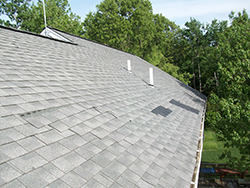Choosing an Installer
Guest post by New England Clean Energy Customer C.J. Siano
Thinking of going solar? Here’s a brief guide based on my experience with my 9,945-watt system in Bolton, MA, which went live on October 1. Bottom line? Quality matters, whether it’s the quality of the installation company, the equipment they sell, or the methods they use.
I ”shopped” for my solar for well over a year, starting with one of those solar lease companies that somehow got my Email address. When I heard solar could be installed for virtually nothing, the skeptic in me came out and I began my own research.
First, don’t do the lease. Either buy or borrow to get your solar. Lease programs will not save you nearly as much and will be a hassle if you need to sell your home. Loans are a great alternative and some pretty much cover what you pay for electricity monthly. However, the best route is to buy. This is the route we went.
I’m a technical person by profession and training. When it came to the solar equipment, I made the effort to know exactly how all the pieces worked. While the panels on the roof are the most visible, it’s the way the components work as a system that really matters.
Without becoming an electrical engineer, how do you know if a proposed system is good? Most major manufacturers have videos or sales material on their web sites that tell you how their components work and what kind of efficiency you can expect. If the components you are being quoted don’t offer those things, look out. Hopefully the company you are dealing with will also help explain the components they recommend (some don’t). I found that the sales presentations that clearly listed the equipment, and the sales person that understood the technology enough to explain the way it worked, was usually the company that had the better designs. If you don’t feel like you understand what you are buying, be cautious.
Then came meetings with the various companies that do installations. Now, a single salesman isn’t the entire company, but when the sales person is pushy and full of himself, you wonder if the goal is to sell on fluff, not substance. When Roy from New England Clean Energy came, he was anything but pushy. He took careful measurements of our roof, how the sun hits the roof, and various trees, and plugged it all into a computer program that quickly allowed him to show us exactly what kind of performance we might expect.
We had two choices. First was to just cover our electrical needs. Second was to build out the array to provide some extra capacity. With two young boys and a potential future need to eliminate the oil heating, we opted for the larger system. Since we were still under the magic 10,000 watt level, at which I would have needed to add another inverter, the added cost was not nearly as much as you might think.
We had other quotes. Most of them were actually less money. Most were not much less, but one was significantly less. The low ball was going to use equipment I would have to replace in under 10 years. Most of the other lower cost vendors were not using state of the art designs. The higher cost vendors all wanted to set me up for a lease and I wonder if their pricing was a way to enforce a theory that buying would not save all that much.
In any case, when the quotes were in, N.E. Clean Energy was a clearly superior company. The sales person knew the equipment he was selling and was not afraid to hand me specification sheets and answer questions. Yes, he could not answer them all, but was very quick to get back to me with answers.
When it comes to referrals, one company had a very odd list. Most of the people were older and glowed about how nice the crew was, but could not tell me anything about their system. The New England Clean Energy referrals all were very eager to discuss the systems and how they were performing. Sure, referrals are hand-picked by the company, but it does tell you what they want you as the customer to focus on.
Technology moves fast and micro-inverters were the way to go in late 2013, but by mid-2014, power optimizers that drive high voltage DC to the inverter were the new technology. And N.E. Clean Energy had it – nobody else did. Their solution had built-in monitoring, the other guys needed to add a piece for that. I had a choice of panels — lower cost “standard” ones, or “premium” ones that were more efficient but 25% more money. We looked at both and although we could have put up a smaller array with the more efficient panels, it was going to cost more. The extra cost didn’t really buy us anything, so we passed on that. But for a site that doesn’t have the space for more panels, the premium option does make more sense.
I don’t recall any other company offering that kind of choice. In fact, even the N.E. Clean Energy ”standard” panel was more efficient than some of the panels being offered by other companies. I guess you can quote lower prices when you use cheap Chinese equipment.
If you liked this article, you might also enjoy:






2 Responses to “Quality Matters: My Experience Going Solar – Part 1”
Thank you for doing this series of blogs. They are very helpful.
Solar Panels will significantly help the local economy and our environment. It’s true, a quality installer makes all the difference.
The comments are closed.